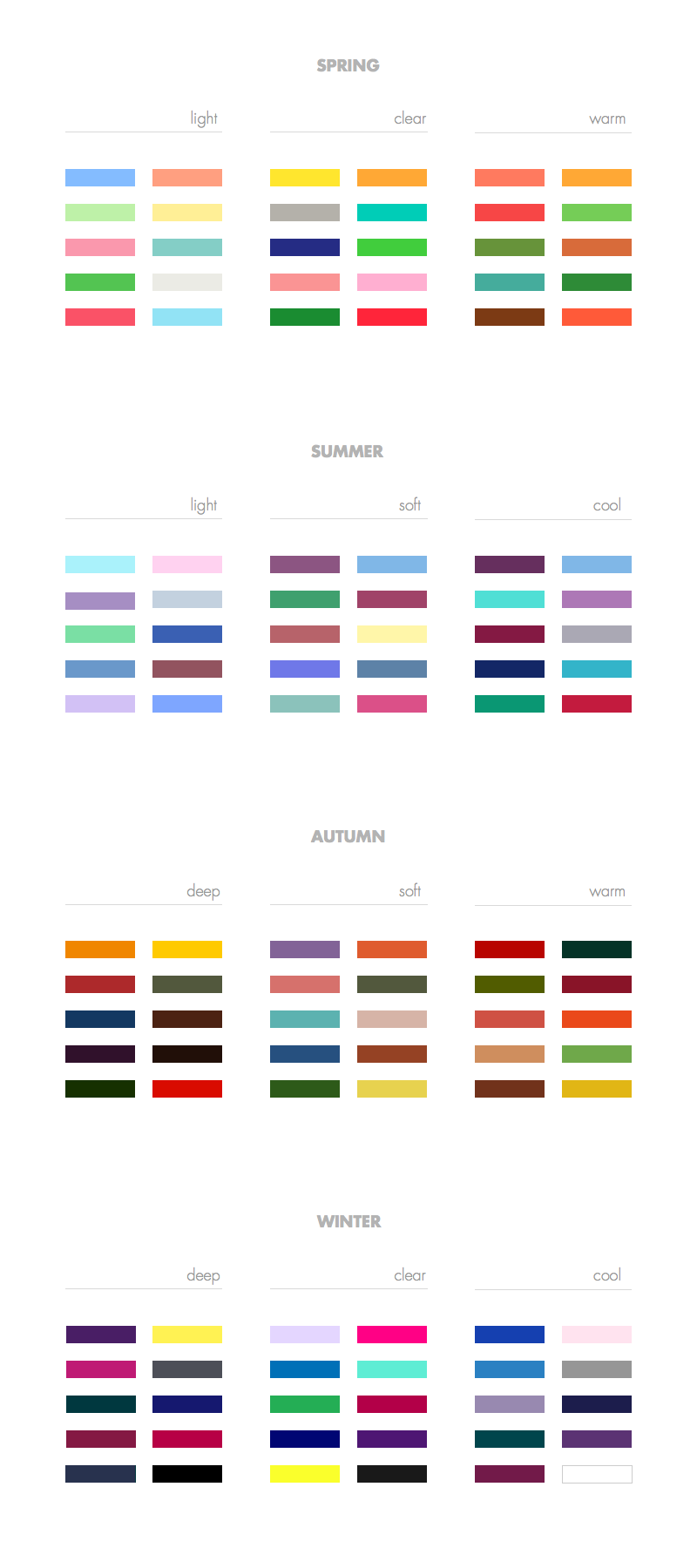Colour Analysis Part II: Your Colours
☞This post is designed to give you an overview of seasonal color analysis only. If you want extra help finding your color type and learn all about your colors: I am currently offering Virtual Color Analysis! You can find all the details here.
The second part of our little colour analysis series is all about exploring the 12 different colour palettes of the seasonal colour typology. Don't worry if you are not sure which one of the 12 types your own colouring fits into. The goal of this whole exercise is not to exclusively wear colours from your recommended palette from now on. Your coloring is only one of many factors that should go into creating a colour palette for your wardrobe, another piece of the puzzle. I will talk more about how to integrate your colours into your style concept (and whether to do it at all) in the next post - for now, try to see your palette as a starting point from which you can slowly develop your own personal palette, based on your colouring AND your style concept.
Exploring your colour palette:
Have a look at the colours that are specifically recommended for your type and ask yourself: does this colour really suit me, does it fit my style concept, do I want to incorporate it into my wardrobe? Do the same with your type's neighbouring palettes: for example if you are a warm Spring, also check out the palettes for the clear Spring, the light Spring and the warm Autumn. Widening your focus to include lots of different nuances of the same colour family will allow you to create a more varied, but still harmonious colour palette and also help you train your eye a bit more. Make notes of your thoughts: What colours do you love/hate/want to try out/need asap. And: Keep an open mind! The best thing about colour analysis and playing around with your palettes is that it will likely help you discover quite a few shades that you thought look awful on you, but that actually suit you super well. Bottom line: Don't reject colours until you have examined them against your bare skin.
Also, bear in mind that the list below is obviously not complete. Use it to become aware of the differences between the palettes, not just between seasons, but also between the sub-types (light vs cool summer for example), so you'll eventually be able to tell in an instant whether a shade suits your colouring or not. The differences between the 4 seasons are relatively easy to spot: they represent different combinations of two basic variables (light vs deep, cool vs warm). The four seasonal palettes are then further narrowed down into three sub-types, which are tailored to a specific most-defining quality: light, deep, soft, clear, cool or warm. For example, the Autumn palette can be further divided into a palette for the warm Autumn, the soft Autumn and the deep Autumn. Spotting the difference between a season's sub-types and also the pattern of the six defining qualities across seasons is a little trickier. Some rules of thumb: The deep type looks best in the intense and darker shades of the respective seasonal palette (Autumn or Winter), the light type in the softer, lighter shades. The warm type suits the mid-range, truly warm shades and the cool type the mid-range, truly cool shades. The soft and clear types can wear the most neutral shades of their seasonal palettes, i.e. the soft Summer is the only sub-type of the Summer palette who can get away with wearing yellow, the soft Autumn is the only Autumn type to suit a deep lavender shade. Also, as the name suggests, clear types look best in the most vivid, highly saturated shades of their seasonal palette, a soft type in the most muted ones.
The entire colour analysis series:
Part II: A complete guide to your colours (this post)
Part III: How to incorporate your colours into your wardrobe (+ what to do if your colours don't match your preferences/style concept)


